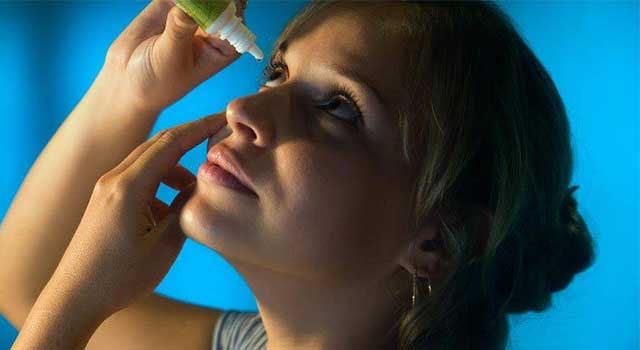 Whether used to treat dry eye, allergies, conjunctivitis, ocular inflammation, or glaucoma, eye drops are among the most common products found in household medicine cabinets. Eye drops may also be prescribed following eye surgery in order to prevent infection or reduce inflammation.
Whether used to treat dry eye, allergies, conjunctivitis, ocular inflammation, or glaucoma, eye drops are among the most common products found in household medicine cabinets. Eye drops may also be prescribed following eye surgery in order to prevent infection or reduce inflammation.
To get the greatest benefit from eye drops, you need to use them properly. If used incorrectly or overused, eye drops can actually damage eye health.
If you?re struggling to use your eye drops as directed, don?t give up! Just follow these simple tips to obtain the greatest benefit from your eye drops and to minimize any side effects.
Tips For Properly Using Eye Drops
- Always read the label.
You wouldn’t believe how many people mistakenly put the wrong product into their eyes. Eye drop bottles may easily get mixed up with ear drops or other medications. Such mix-ups can potentially damage your eyes, and even result in chemical burns. - Remove contact lenses before applying eye drops
It’s rather common for people to forget to remove their contacts prior to applying eye drops. This is problematic, because contact lenses interfere with the distribution of the drops, drastically reducing their effectiveness. Keep in mind that you should wait at least 20 minutes after administering the drops before reinserting your contact lenses. That way, you prevent any eye drop residue from adhering to the lenses. - Apply one drop at a time
When you apply drops in quick succession, you’re wasting your drops, since applying them too quickly pushes out the first drops before they have a chance to be absorbed. If the instructions on the label say that you need to apply two drops, apply a single drop, wait a few minutes, and then apply the next one. - Apply drops on the center of the eye
When applying eye drops, aim for the middle part of the eye. Targeting the inner part will lead the drops to collect near your nose and drip down your face. - Avoid blinking your eyes vigorously after applying eye dropsInstead, gently close your eyes for a few moments or blink as you normally would. By blinking vigorously, you will end up pushing the eye drops out of your eye.
- Keep eye drops in your eye to prevent side-effects
Your tears drain through a small canal into the back of the nose, which has many blood vessels.
When you apply eye drops to your eye, the drops can enter the tear system and rapidly absorb into the bloodstream. To prevent this from happening, place pressure on the lower tear ducts (situated by the bridge of the nose) after applying the drops.
Doing so will help reduce any potential side-effects, such as an increase in blood sugar or blood pressure (in the case of topical steroid drops). - Avoid having the tip of the bottle touch your eye
Always make sure you hold the bottle at least 1 inch away from your eye. If the tip does touch the eye, it may lead to infection, as the bacteria from your eye can contaminate the solution. - Don’t mix eye drops
If you have multiple prescriptions or use over-the-counter drops, apply them at different times during the day. Combining too many drops at once may reduce their effectiveness.
Though applying eye drops may seem like a straightforward task, not everyone does it right. If you have questions or are having difficulty applying eye drops, speak with Scott Irvine, O.D. at Neuro Visual Performance in today.